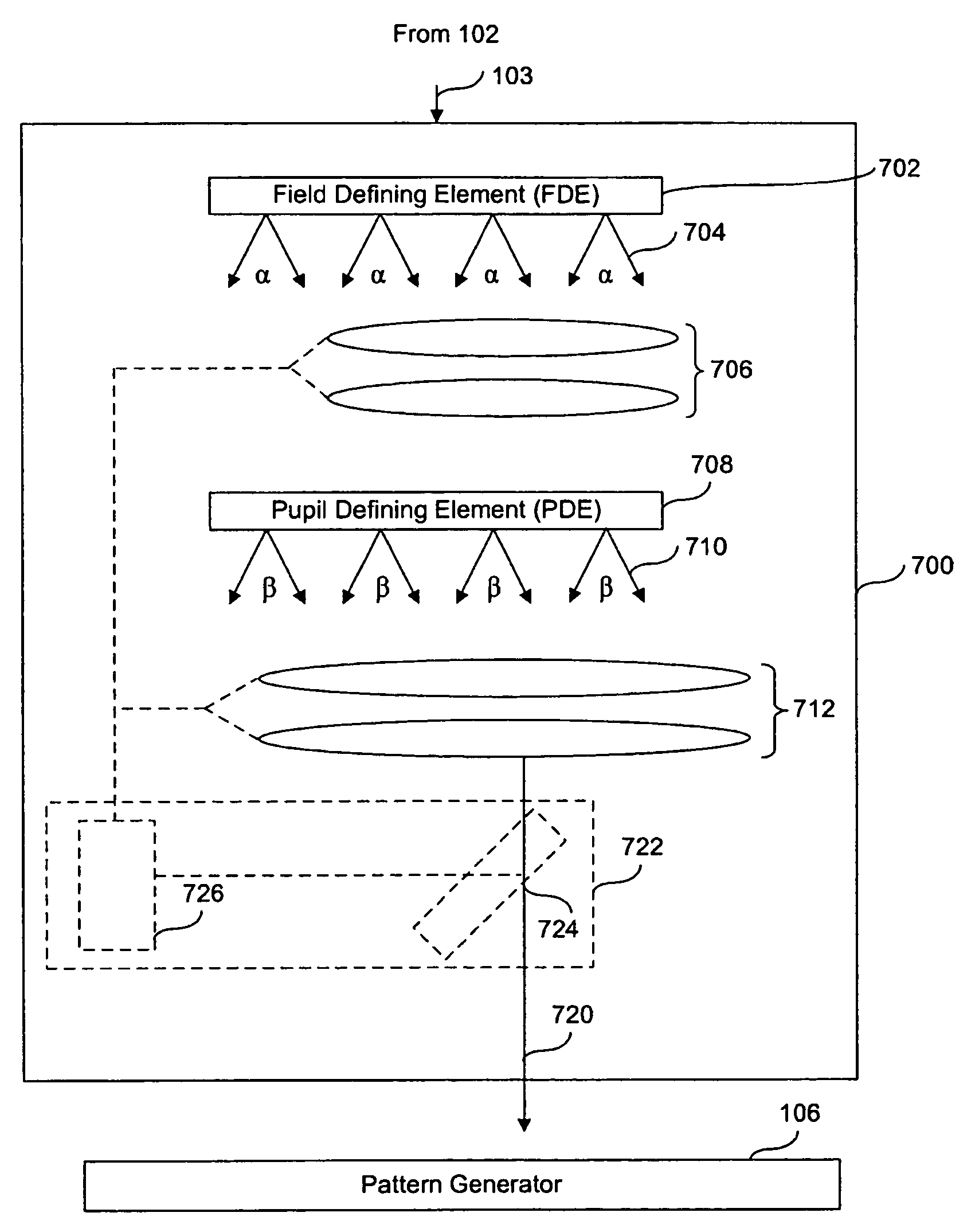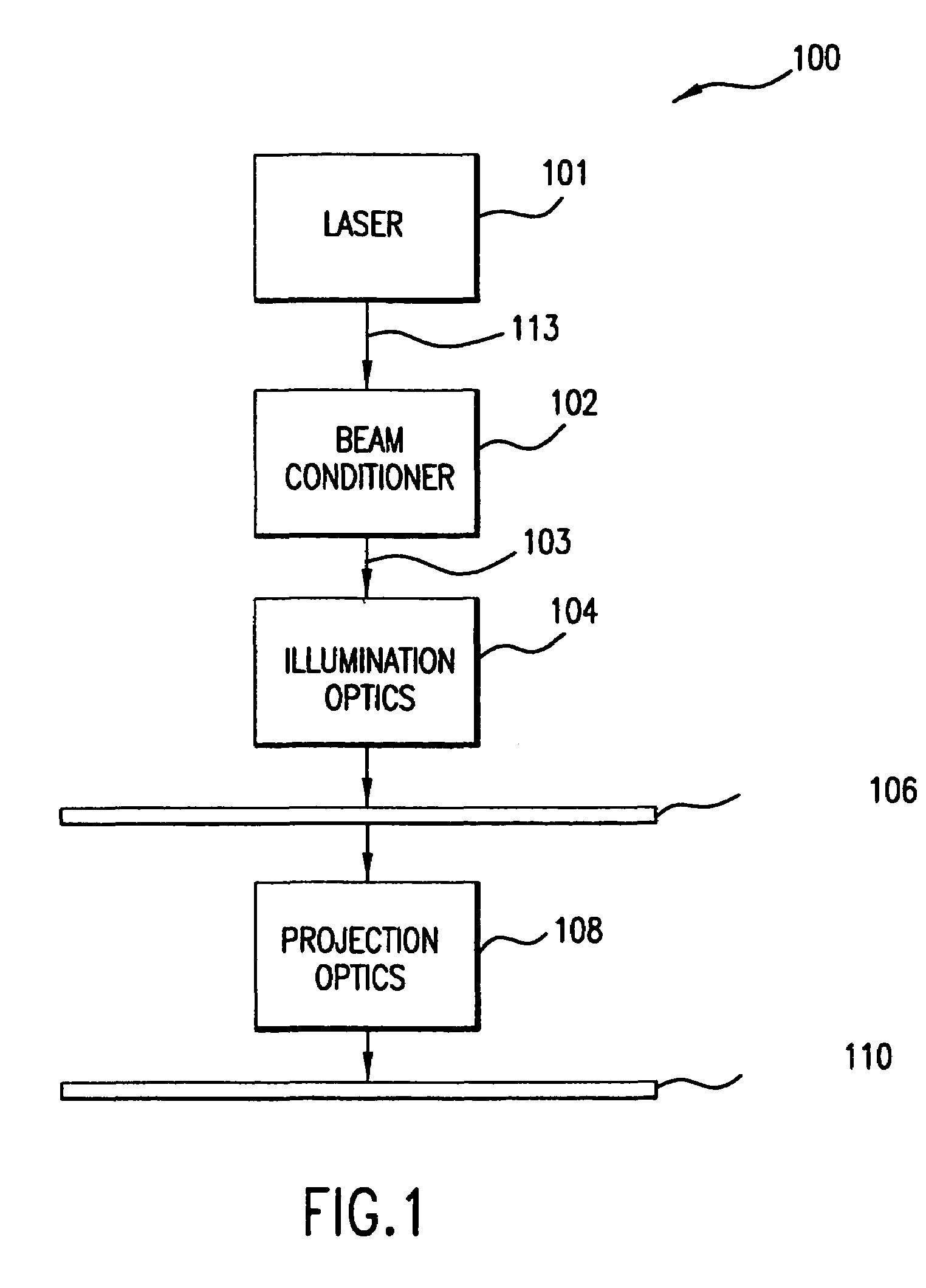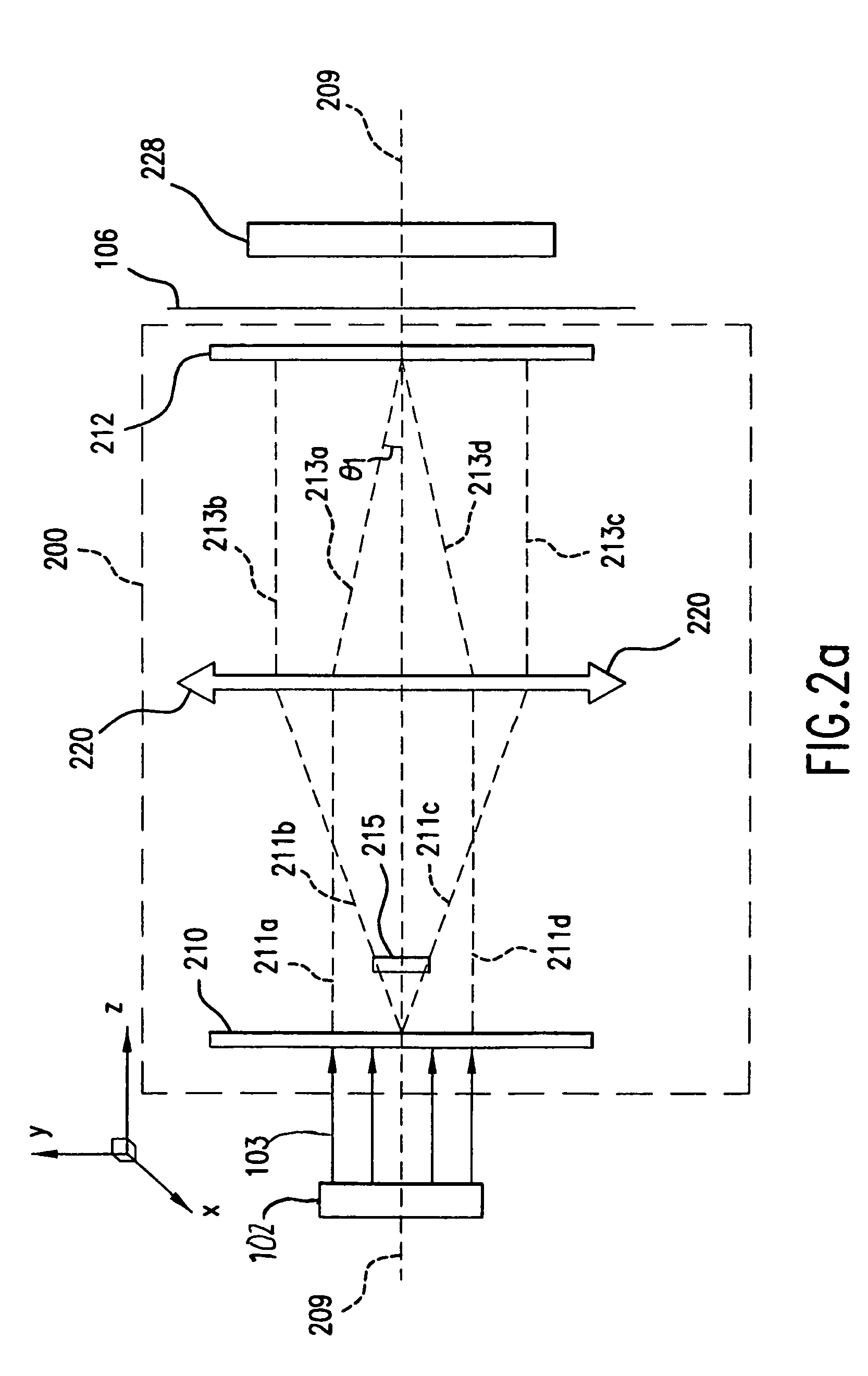Illumination system and method allowing for varying of both field height and pupil
a technology of illumination system and pupil, which is applied in the field of illumination system, can solve the problems of reducing the numerical aperture by a factor 1/m, unable to preserve the angular distribution of the illumination field, and reducing the amount of energy available from the illumination system
- Summary
- Abstract
- Description
- Claims
- Application Information
AI Technical Summary
Benefits of technology
Problems solved by technology
Method used
Image
Examples
first embodiment
[0060]Referring again to FIG. 3a, zoom lens section 310 is shown. Light 211 is incident upon input lens 301 of condenser system 220. Input lens 301 changes the magnitude of light 211. As used herein, the term changing the magnitude of the light means expanding and / or reducing the magnitude of the light. After being refracted by input lens 301, light 211 becomes first condensed light 372. As used herein, the term condensed light means a light having expanded and / or reduced magnitude. Input lens 301 directs first condensed light 372 towards zoom lens section 310.
[0061]First zoom lens 311 of zoom lens section 310, while in position 320a, receives first condensed light 372. First zoom lens 311 changes the magnitude of first condensed light 372. After being refracted by first zoom lens 311, first condensed light 372 becomes second condensed light 373. First zoom lens 311 directs second condensed light 373 towards second zoom lens 312, which is in position 321a.
[0062]Second zoom lens 312...
second embodiment
[0064]FIG. 3b shows zoom lens section 310 according to the present invention. In this embodiment, first zoom lens 311 is in a position 320b and second zoom lens 312 is in a position 321b. Condenser system 220 forms an illumination field 350b based on the positioning of lenses 311 and 312. Illumination field 350b can have a different size as compared with illumination field 350a of FIG. 3a.
third embodiment
[0065]FIG. 3c shows a zoom lens section 310 according to the present invention. In this embodiment, first zoom lens 311 is in a position 320c and second zoom lens 312 is in a position 321c. Condenser system 220 forms an illumination field 350c based on the positioning of lenses 311 and 312. Illumination field 350c can have a different size as compared with illumination fields 350a of FIG. 3a and 350b of FIG. 3b.
5-Lens Condenser System
[0066]FIG. 4a illustrates 5-lens condenser system 220 according to an embodiment of the present invention. In this embodiment, 5-lens condenser system 220 includes an input lens 301, an output lens 303, and a zoom lens section 410. Zoom lens section 410 is placed along optical axis 209 between input lens 301 and output lens 303. Zoom lens section 410 includes a first zoom lens 411, a second zoom lens 412, and a third zoom lens 413.
[0067]In this embodiment, input lens 301 and output lens 303 are stationary lenses and zoom lens section 410 is capable of ...
PUM
| Property | Measurement | Unit |
|---|---|---|
| wavelengths | aaaaa | aaaaa |
| wavelengths | aaaaa | aaaaa |
| wavelengths | aaaaa | aaaaa |
Abstract
Description
Claims
Application Information
 Login to View More
Login to View More - R&D
- Intellectual Property
- Life Sciences
- Materials
- Tech Scout
- Unparalleled Data Quality
- Higher Quality Content
- 60% Fewer Hallucinations
Browse by: Latest US Patents, China's latest patents, Technical Efficacy Thesaurus, Application Domain, Technology Topic, Popular Technical Reports.
© 2025 PatSnap. All rights reserved.Legal|Privacy policy|Modern Slavery Act Transparency Statement|Sitemap|About US| Contact US: help@patsnap.com



